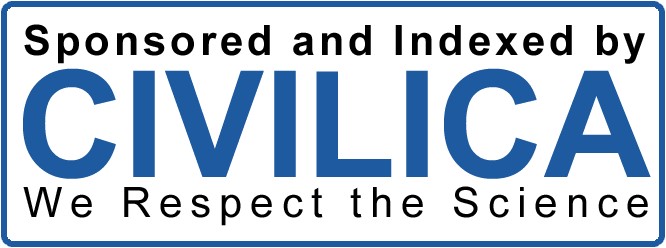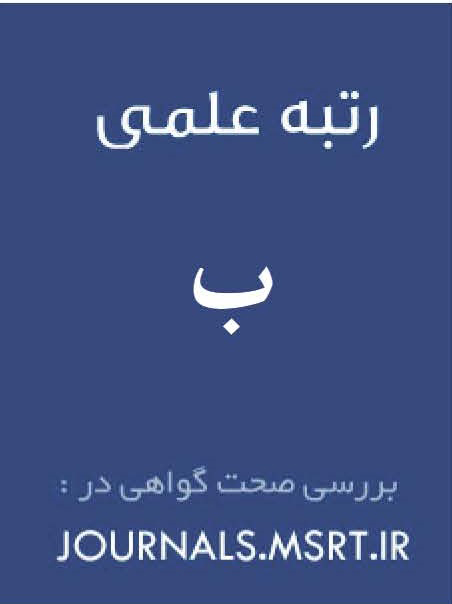Ethical Principles
The editorial board of Psychology of Motivation, Behavior, and Health is deeply committed to upholding the highest standards of ethical conduct in every aspect of the publication process. The journal strictly adheres to the principles and guidelines established by the Committee on Publication Ethics (COPE), the International Committee of Medical Journal Editors (ICMJE), and other international codes of research and publication ethics. All stakeholders—authors, reviewers, editors, and publishers—are expected to uphold these ethical responsibilities to preserve the integrity, reliability, and academic value of the published content.
This section outlines the ethical responsibilities and standards expected at every stage of the publication process, including authorship, peer review, editorial decision-making, conflict of interest, data management, plagiarism, and post-publication responsibilities.
1. Responsibilities of Authors
Authors submitting manuscripts to Psychology of Motivation, Behavior, and Health must confirm and ensure the following:
1.1 Originality and Integrity of Research
-
All submitted work must be original, unpublished, and not under review elsewhere.
-
Authors must ensure that the data presented are accurate, properly analyzed, and not fabricated, manipulated, or falsified in any way.
-
Any use of copyrighted material, figures, or previously published data must be properly cited and used with appropriate permissions.
1.2 Authorship Criteria
-
Only individuals who have made substantial contributions to the conception, design, data collection, analysis, or interpretation of the research should be listed as authors.
-
All listed authors must approve the final version of the manuscript and agree to its submission.
-
Contributors who do not meet authorship criteria should be acknowledged in a separate section, with their specific roles described.
1.3 Multiple, Redundant, or Concurrent Submissions
-
Manuscripts that describe essentially the same research or findings must not be submitted to multiple journals.
-
Redundant publication or "salami slicing" (publishing multiple papers from the same dataset without justification) is strictly prohibited.
1.4 Citation Practices
-
Authors must properly acknowledge all sources and influential literature relevant to their study.
-
Excessive self-citation or citation manipulation to inflate metrics is considered unethical.
1.5 Disclosure of Conflicts of Interest
-
Authors must disclose any financial, institutional, or personal relationships that may influence their research.
-
All potential conflicts of interest should be declared in the manuscript.
1.6 Ethical Approval and Informed Consent
-
Studies involving human participants must have received prior approval from an appropriate ethics committee or institutional review board (IRB).
-
Informed consent must be obtained from all participants, with special consideration given to vulnerable populations.
-
Authors must ensure confidentiality and anonymity of participant data.
2. Responsibilities of Reviewers
The journal employs a double-blind peer-review process. Reviewers play a critical role in ensuring the scholarly quality of the journal. Their ethical responsibilities include:
2.1 Confidentiality
-
Reviewers must treat the manuscripts as confidential documents and must not share, discuss, or use the information in any capacity beyond the review process.
2.2 Objectivity and Constructiveness
-
Reviews must be conducted fairly, respectfully, and without personal bias.
-
Reviewers should provide clear, constructive feedback to help authors improve their manuscripts.
2.3 Timeliness
-
Reviewers should respond promptly and adhere to the timelines agreed upon. If a reviewer cannot meet the deadline, they should inform the editorial office immediately.
2.4 Conflict of Interest
-
Reviewers must disclose any potential conflicts of interest that might bias their evaluation and recuse themselves if necessary.
2.5 Academic and Scientific Integrity
-
Reviewers should alert the editorial team if they suspect plagiarism, duplicate publication, data fabrication, or other ethical issues.
3. Responsibilities of Editors
The editorial board is responsible for making publication decisions and maintaining the academic integrity of the journal.
3.1 Fairness and Impartiality
-
Manuscripts are evaluated based solely on scientific merit, without regard to the authors’ race, gender, sexual orientation, religion, citizenship, or political ideology.
3.2 Confidentiality
-
Editors must not disclose information about submitted manuscripts to anyone except those involved in the editorial process.
3.3 Publication Decisions
-
The Editor-in-Chief makes the final decision on which manuscripts are accepted, based on reviewer feedback, scientific merit, relevance to the journal’s aims, and ethical compliance.
3.4 Handling of Misconduct
-
Editors are responsible for investigating ethical concerns, including allegations of plagiarism, data manipulation, or authorship disputes, and following COPE flowcharts for resolution.
4. Research Misconduct and Retraction Policy
The journal takes allegations of research misconduct seriously and has established the following procedures:
4.1 Plagiarism
-
All submissions are checked using plagiarism detection software (e.g., iThenticate).
-
Submissions containing significant overlap with previously published works without appropriate citation will be rejected.
4.2 Data Fabrication and Falsification
-
Discovery of falsified or manipulated data will result in manuscript rejection or retraction of a published article.
4.3 Retractions and Corrections
-
Retractions are issued in cases of proven misconduct, major errors, or unethical research practices.
-
Corrections (errata) are issued for honest mistakes that do not undermine the research’s validity but require clarification.
5. Conflict of Interest and Funding Disclosure
All stakeholders involved in the publication process—authors, reviewers, and editors—must disclose any financial or non-financial conflicts of interest. These include:
-
Employment, consultancy, or funding from organizations that may be affected by the research.
-
Personal relationships or academic rivalries that may influence objectivity.
-
Editorial board members must recuse themselves from handling papers where conflicts exist.
Funding sources for research must be clearly disclosed in the manuscript, including grant numbers, sponsors, and institutional support.
6. Data Availability and Transparency
Authors are encouraged to:
-
Make their data available in a publicly accessible repository.
-
Provide full disclosure of data collection procedures, analysis methods, and study limitations.
-
Cooperate with the editorial office in the event of concerns regarding the reproducibility of results.
Transparency enhances scientific trust and enables replication of research findings.
7. Ethical Oversight of Human and Animal Research
Manuscripts involving human subjects must:
-
Include statements confirming informed consent and ethical committee approval.
-
Describe participant recruitment, data confidentiality measures, and procedures for obtaining consent.
If animal research is involved, authors must comply with international standards for the ethical treatment of animals and obtain appropriate institutional clearance.
8. Post-Publication Responsibilities
Authors, readers, or third parties who identify errors or ethical issues in published work are encouraged to contact the editorial office. The journal is committed to:
-
Investigating all credible concerns promptly.
-
Issuing retractions, expressions of concern, or corrections as appropriate.
-
Engaging with COPE guidelines and professional bodies when ethical violations are complex or require institutional cooperation.
Transparency Statement on the Use of Artificial Intelligence
In light of the growing use of artificial intelligence (AI) tools in academic writing, translation, data analysis, and editorial processes, our journal is committed to ensuring full transparency and ethical responsibility in the use of such technologies throughout the submission, peer review, and publication processes.
To uphold the highest standards of academic integrity and align with the recommendations of the World Association of Medical Editors (WAME), our journal has adopted the following principles regarding the use of AI:
-
Transparent and Responsible Use: Authors are required to clearly disclose any use of AI tools—such as ChatGPT, Grammarly, DeepL, or others—at any stage of manuscript preparation (e.g., literature review, results description, discussion writing, language editing, or translation). This disclosure should appear in the acknowledgments section or a footnote on the title page.
-
AI Tools Cannot Be Authors: According to the WAME guidelines, AI tools cannot be credited as authors of scientific manuscripts. These tools do not meet authorship criteria because they lack legal responsibility and the ability to consent to publication or accountability for the content.
-
Human Oversight and Validation: All AI-generated content must be critically reviewed, edited, and validated by human authors. The final responsibility for the accuracy, coherence, and integrity of the manuscript lies solely with the human contributors.
-
Use in Peer Review: Peer reviewers using AI tools to assist with manuscript evaluation must ensure they do not share confidential information with such tools. Any AI use during review must comply with confidentiality and data protection standards.
-
Misuse and Ethical Violations: The inappropriate use of AI—such as generating fabricated content, falsifying data, or committing plagiarism—will be treated as a serious ethical violation and subject to disciplinary action in accordance with publication ethics.
-
Policy Review and Updates: This policy will be reviewed regularly in response to evolving AI technologies and ethical considerations. Any updates will be published on the journal’s official website.
Our journal is committed to transparency, integrity, and accountability in scientific publishing. We fully adhere to the WAME statement entitled “Recommendations on Chatbots and Generative Artificial Intelligence in Relation to Scholarly Publications.”
For the complete text of WAME’s recommendations, please visit:
https://wame.org/page3.php?id=106





